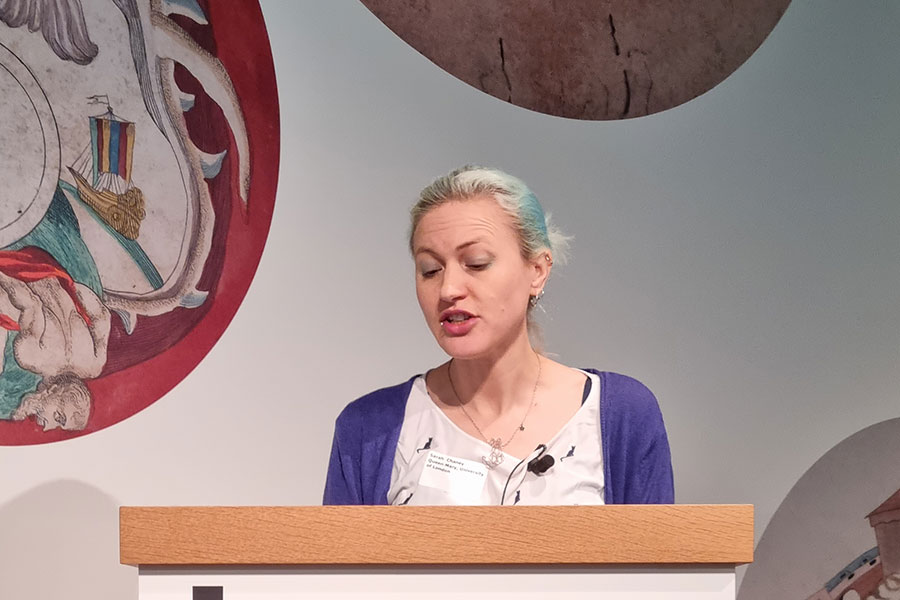Research Fellow, Queen Mary University of London and RCN Events and Exhibition Manager

Abstract
“Under the constant charge of a special attendant”: Managing suicidal behaviour in the era of non-restraint, 1850 – 1890
In May 1865, a middle-aged clerk named Henry W. was admitted to the Bethlem Royal Hospital. Henry was suffering from melancholia and, a few days before his admission, had attempted to cut his throat. About half an hour after admission, the case book explains, he “suddenly without any previous warning tore off the plaister over the wound and disclosed a deep and long incision extending from the ear to the centre of the throat”. The wound was sutured and covered, and a special watch arranged. Despite this, just two days later, Henry W. managed to tear the wound open again. After this, it was made sure that “an attendant on either side never leaves hold of his hands.”
Thirty years earlier, Henry W. would probably have been restrained to prevent his self-injurious behaviour. From around 1850, however, the vast majority of institutions in England and Wales followed a strict policy of non-restraint. No straitjackets, straps, cuffs or other mechanical devices were permitted on the wards. For some patients this meant increased freedom. For others, like Henry W., the nursing staff instead became their restraint.
While this constant handholding was undoubtedly unpleasant for Henry W. and patients like him, in this talk I instead want to explore the impact of such procedures on the nursing staff who carried them out. I begin by outlining the responsibilities and requirements for suicide prevention placed on male and female attendants in English asylums in the second half of the nineteenth century. Poorly paid and largely untrained attendants were charged with maintaining the therapeutic domestic environment – even carving the Sunday roast on the ward – while nonetheless preventing harm to patients. They could be summarily suspended, and even discharged, if a patient in their care managed to injure themselves.
Middle-class doctors held quite negative attitudes towards working-class attendants, often assuming that patient injury was evidence of a neglect of duty, despite admitting that it was never possible to protect against self-injury entirely. I go on to explore how these class-based attitudes became increasingly apparent as mechanical restraint began to return to the wards in the late 1880s. Restraint garments were necessary, some doctors claimed, to protect suicidal and self-harming patients from their violent and unrefined nurses as well as from themselves. Others disagreed and saw the return of restraint as a response to the dangerous understaffing of psychiatric wards. I conclude by explaining what we can learn from a better understanding of this era of suicide prevention in nursing, and a more nuanced look at the non-restraint period as a whole.
Biography
Dr Sarah Chaney is a post-doctoral researcher in the Centre for the History of the Emotions, Queen Mary University of London, and Events and Exhibitions Manager at the Royal College of Nursing. Her PhD thesis explored self-injury in Victorian asylum psychiatry, and was expanded into the monograph Psyche on the Skin: A History of Self-Harm (2017), detailing the history of self-injury from the Victorian era to the present day. She is currently researching the history of emotions and nursing in the early twentieth century. Her new book, AM I NORMAL? The 200-year search for Normal People (and why they don’t exist) is due out with Wellcome Collection in 2022.
Selected publications
- Chaney, S. Psyche on the Skin: A History of Self-Harm, (London: Reaktion Books, 2017)
- Chaney, S. “In Search of Sympathy: Stereotypes and Stiff Upper Lips in Inter-war Nursing” in Sexpots and Saints: Essays on the Media History of Nurses and Nursing, ed. Harmes et. al. (Jefferson: McFarland, in press 2022)
- Chaney, S. “Psychiatry’s material culture: the symbolic power of the straitjacket” in Sources in the History of Psychiatry from 1800 to the present, eds. Millard, C. and Wallis, J. (Abingdon: Routledge, in press 2021)
- Chaney, S. “Before Compassion: Sympathy, Tact and the History of the Ideal Nurse”, BMJ Medical Humanities, 47: 4 (2021): 475-484
- Chaney, S. “‘No “Sane” Person Would Have Any Idea’: Patients’ Involvement in Late Nineteenth-century British Asylum Psychiatry”, Medical History, 60:1 (2016): 37-53.
